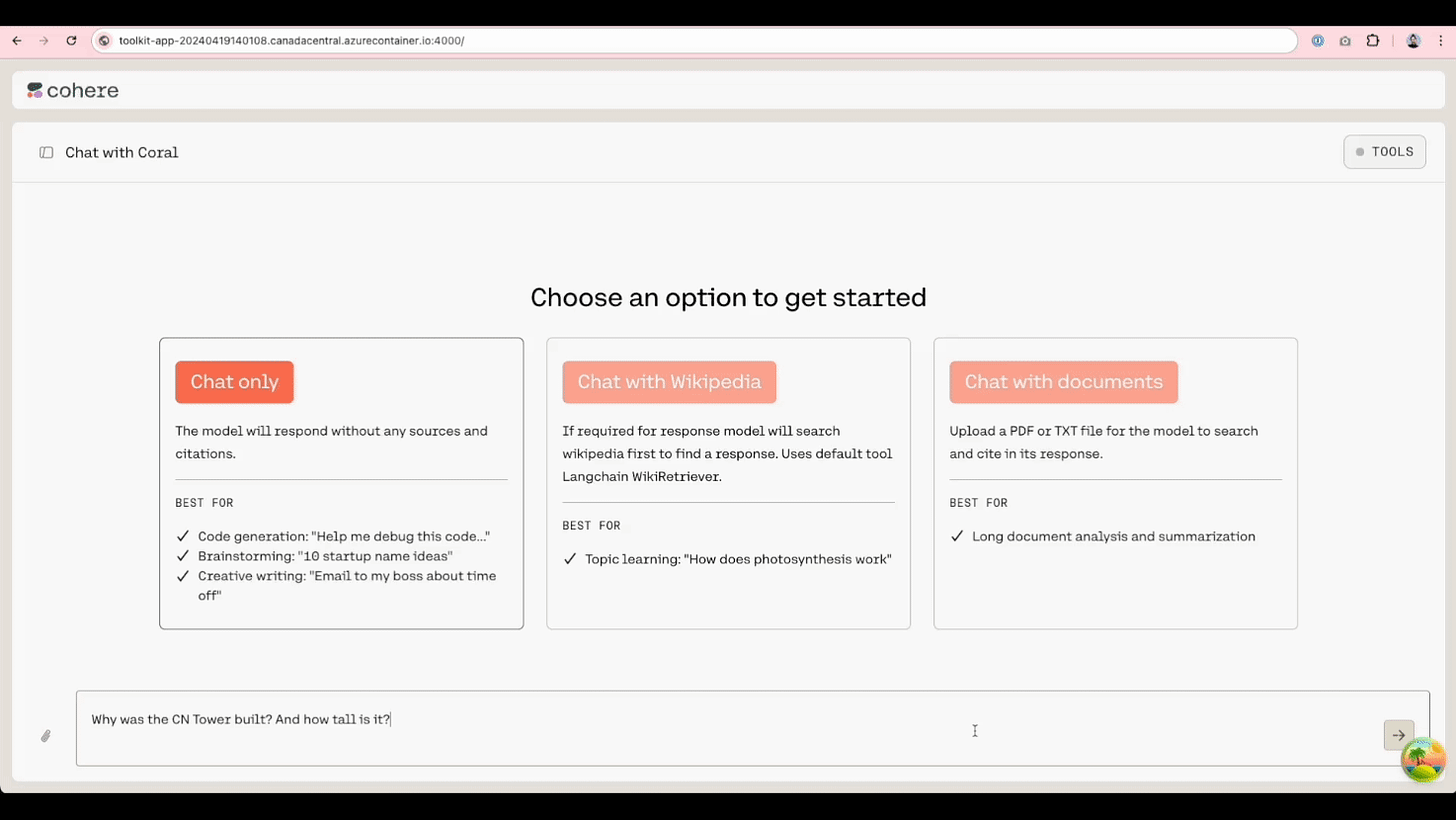
Today’s top AI Highlights:
-
Israel-based robotics company emerges from stealth with a humanoid robot ready for home and warehouse
-
Apple’s new opensource language models: What this means for your iPhone experience
-
From autonomous vehicles to Optimus and more revenue streams: Elon Musk lays a clear AI strategy for Tesla
-
Build and deploy RAG apps with Cohere’s opensource chat interface toolkit
& so much more!
Read time: 3 mins
Robotics is witnessing a new wave of innovations with generative AI. Many companies are developing general-purpose humanoid robots that can carry out almost any kind of task, follow instructions, and communicate with humans just like an assistant would. In this space with companies like Boston Dynamics, Figure, Tesla, and 1X, is another Israeli startup that has emerged from stealth, Mentee Robotics.
They have been developing a bipedal humanoid robot that can be deployed in both homes as well as industrial settings. Integrating AI at every dynamic, the robot features advanced mobility and cognitive skills and can even learn from its owner, performing new tasks it hasn’t been programmed to perform.
Key Highlights:
-
AI at Every Step: MenteeBot includes state-of-the-art Sim2Real algorithms for learning and planning movements, NeRF-based real-time 3D mapping for navigating through spaces, and an LLM to understand human instructions and communicate.
-
Versatile Functionality: Whether it’s setting a table, cleaning up, handling laundry, or performing warehouse operations, MenteeBot can execute a wide range of tasks. It can lift objects weighing up to 25 kg and operates continuously for up to 5 hours before needing a recharge.
-
Human-Like: With fully capable hands that present a full range of motion and a design that allows for natural gait adjustments, the robot mimics human movements closely. Though it sometimes feels like it is going to trip and fall in front.
-
Differentiator: The company says it’s trained mainly as a household help where it can handle even delicate items like crockery. Besides following instructions and responding, it can even learn new tasks. This approach is different from other companies right now which are focusing on deploying robots in factories.
-
Availability: MenteeBot will be available in limited production by 2024 end, targeting both residential and commercial applications.
As Apple gears up for its upcoming Worldwide Developers Conference (WWDC), the spotlight is on how new AI capabilities could enhance user experiences on Apple devices. Apple has introduced OpenELMa series of opensource language models with state-of-the-art performance. With Apple expected to introduce a range of new features in its next OS, the integration of sophisticated AI models directly on devices such as iPhones could become a reality.
-
Model Varients: OpenELM models are in four variants – 270M, 450M, 1.1B, and 3B parameters. These models are designed to run efficiently, supporting high-performance AI applications.
-
Efficient and Accurate: They use a clever technique called “layer-wise scaling” to achieve better performance with fewer parameters compared to other similar models. This means they could run on devices like iPhones without needing a lot of power.
-
Performance Comparison: Apple’s models display mixed results. For example, the OpenELM-1.1B model surpasses the OLMo-1.2B by a margin of 2.36% on standard tasks while needing half the training tokens. However, when looking at the MMLU (a measure of model understanding), OpenELM-3B scores only 24.8, significantly lower than the Phi-3B mini’s 68.8 from Microsoft, indicating a substantial gap in real-world applicability.
-
Accessibility and Privacy: Running AI models like OpenELM locally on devices is important for data privacy, keeping user data on device. It also ensures that AI features are available offline for a consistent and reliable user experience.
-
Speed: While current OpenELM models may be slower than peers at raw inference speed, Apple is looking to optimize it for a faster and smoother AI experience.
-
Real-World Utility: While OpenELM’s performance is promising in controlled tests, its practical effectiveness is questionable, as evidenced by its lower MMLU scores. In fact, with an MMLU of 24.8, it barely outperforms random guessing, which statistically could achieve 25% accuracy.
While Tesla may not have delivered an impressive financial performance for Q1 2024, Elon Musk, during Tesla’s latest earnings call, painted a clear picture of the company being heavily intertwined with AI. He showed unwavering confidence in achieving fully autonomous driving through Tesla’s FSD technology. He also shed light on Tesla’s expanding AI infrastructure, ambitious plans for Optimus, its humanoid robot, and the company’s plans to utilize idle compute capacity with an AWS-like strategy.
Key Highlights:
-
Full Self-Driving (FSD):
-
Vision-Based Approach: Musk strongly believes that a vision-based approach using cameras and neural networks is the right solution for scalable autonomy, just like the human way of driving.
-
Data Collection: FSD V12’s price was slashed to $99 and rolled out to around 1.8 million vehicles in North America, with around 50% of users actively utilizing it. Tesla has accumulated valuable data of over 300 billion miles driven with FSD V12 for further improvement.
-
Safety & Regulation: Stringent safety protocols and validation processes are employed for FSD. With increasing acceptance of autonomous vehicles in various states, Tesla is optimistic about regulatory approval for unsupervised FSD, even in China.
-
-
Dojo & AI Infrastructure:
-
Massive Compute Power: Tesla has more than doubled its training compute capacity in Q1 2024. It has installed and commissioned 35,000 H100 compute units (not GPUs), aiming for 85,000 by year-end.
-
Efficiency is Key: Tesla emphasizes maximizing training efficiency, utilizing its compute power effectively to accelerate AI development.
-
-
Optimus: Optimus robots can currently perform simple factory tasks in a lab environment. Tesla expects to have Optimus robots performing useful tasks in actual factories by the end of 2024, with potential external sales by the end of 2025.
-
Distributed Inference & AWS-like Potential:
-
Idle Resources: There is a potential to utilize the idle compute capacity of its vehicle fleet, potentially reaching hundreds of gigawatts, harnessed for distributed inference tasks, similar to AWS.
-
Generating Additional Revenue: This AWS-like offering could provide services like processing large data workloads for other companies, creating a new revenue stream for Tesla.
-
😍 Enjoying so far, share it with your friends!
-
Cohere’s Toolkit: Cohere has open-sourced Coral, its chat interface optimized for multi-turn conversations that supports RAG, document uploads, and integrates seamlessly with Cohere’s models on Azure and AWS. The toolkit allows developers to enhance their apps with advanced conversational capabilities and is adaptable for use across various data sources and partner platforms.
-
MealSnap: AI meal log journal is a user-friendly mobile app that simplifies meal tracking and calorie counting using AI technology. By scanning your meal with a camera, the app instantly logs nutritional content and provides visual reports to support various dietary goals.
-
Hive Network: Create and monetize decentralized AI agents on a platform that connects AI researchers, ML engineers, and agent builders. This community-driven ecosystem enhances transparency and innovation, allowing you to build AI agents, integrate multiple models and APIs, and handle complex tasks through collaborative agent “Swarms”.
-
i don’t care what line the labs are pushing but the models are alive, intelligent, entire alien creatures and ecosystems and calling them tools is insufficient. they are tools in the sense a civilization is a tool ~
there -
AI is starting to feel like Crypto did a couple of years ago
People poured millions into ridiculous ape photos called NFTs and got caught up in all kinds of scams.
The Twitter hype created a huge bubble that burst very quickly!
We are seeing some of that with sky high valuations, hurried press releases and excessive focus on marketing demos ~
Bindu Reddy
That’s all for today! See you tomorrow with more such AI-filled content.
⚡️ Follow me on Twitter @Saboo_Shubham for lightning-fast AI updates and never miss what’s trending!
PS: I curate this AI newsletter every day for FREE, your support is what keeps me going. If you find value in what you read, share it with your friends by clicking the share button below!





































































































































































































































































































































































































































































